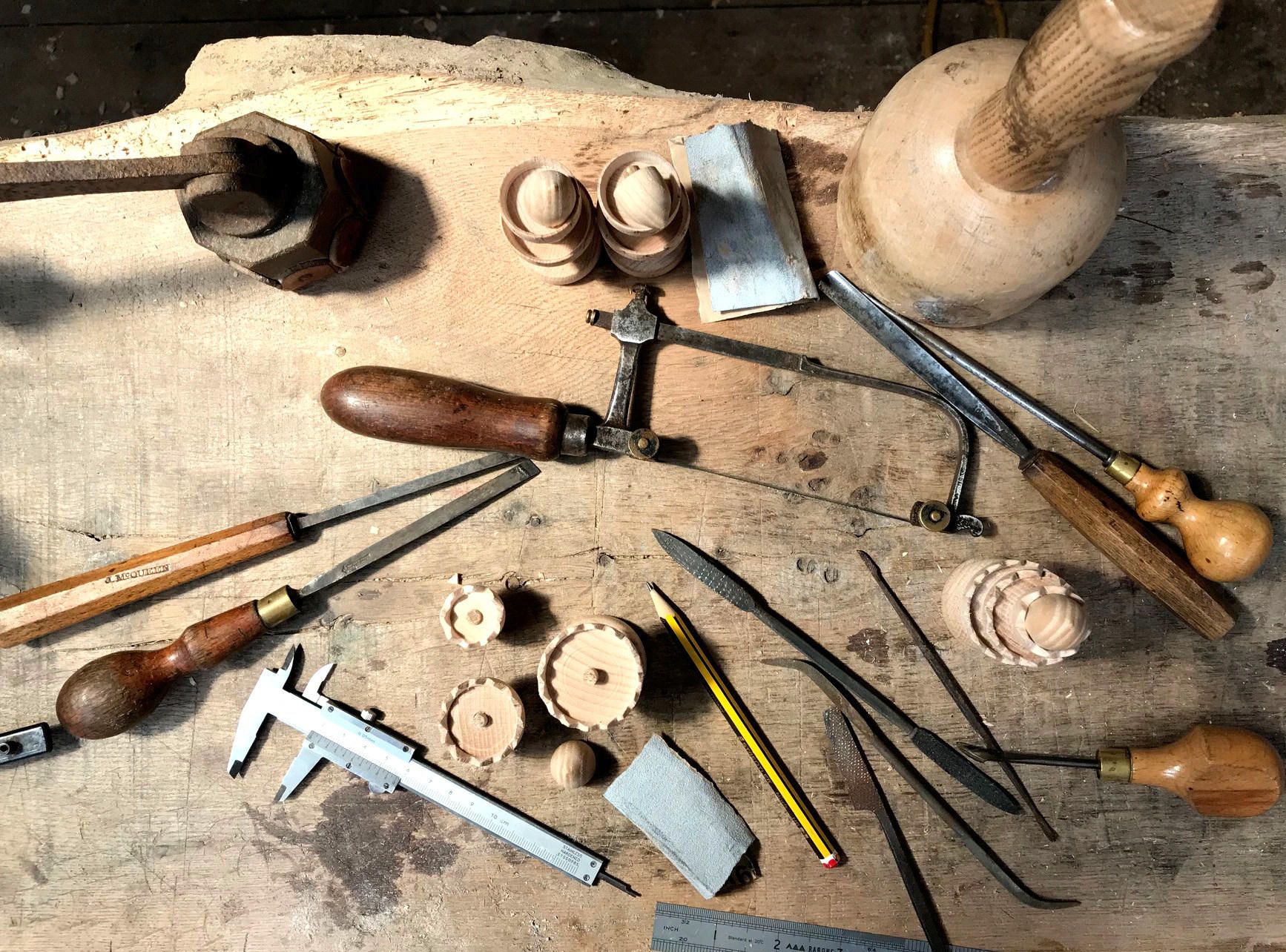The design and manufacture of chess pieces
In the medieval period chess pieces would have been manufactured in small workshops, or by individuals. Though the evidence is minimal archaeological examples of workshops are known. The materials used to make early chess pieces varied but there are surviving examples of antler, bone, glass, ceramic, stone, jet, walrus ivory and wood. Wooden pieces survive less well and are probably under-represented. Early medieval pieces were mostly carved, and the tools needed would have been commonplace, though a well-equipped workshop would have been able to produce more elaborate pieces faster. By the thirteenth century the king and queen were being turned on lathes; and by the fourteenth century the rook, knight and bishop were often made up of a turned pedestal with the upper element carved in such a way as to identify them. By this time pawns were also turned. A small pole lathe or a bow lathe would have been used, and while these were most commonly set up in workshops it is possible that an individual could manufacture a chess set in this way at home. By the sixteenth century the combination of carved and turned pieces becomes more elaborate, and manufacturing most probably took place in specialised workshops.
The changes that take place in chess pieces between the ninth and early seventeenth centuries show, in different places, both rapid and slow paces of evolution, innovation, and a certain amount of unwillingness to break tradition. However, change does happen, so there must have been designers who thought about how chess pieces should look. The most important guiding principle is likely to have been that the pieces must be easily differentiated by players, and it is possible that this was a major factor in innovation and the evolution in appearance of pieces.
Finally, because of the nature of manufacture - by hand using simple tools - in any one chess set it is to be expected that there would have been minor differences within the sixteen pawns, within the four rooks, knights and bishops, and even between the two king and queens. Such differences may have been small, but might seem obvious next to a modern factory-made set.
The chess sets made by The Historic Games Shop are reproductions of historic sets, the forms taken from archaeological examples or interpreted from manuscripts. They are hand made, though I use a modern electric lathe and, as with all historic sets, there are small differences between the pieces.

